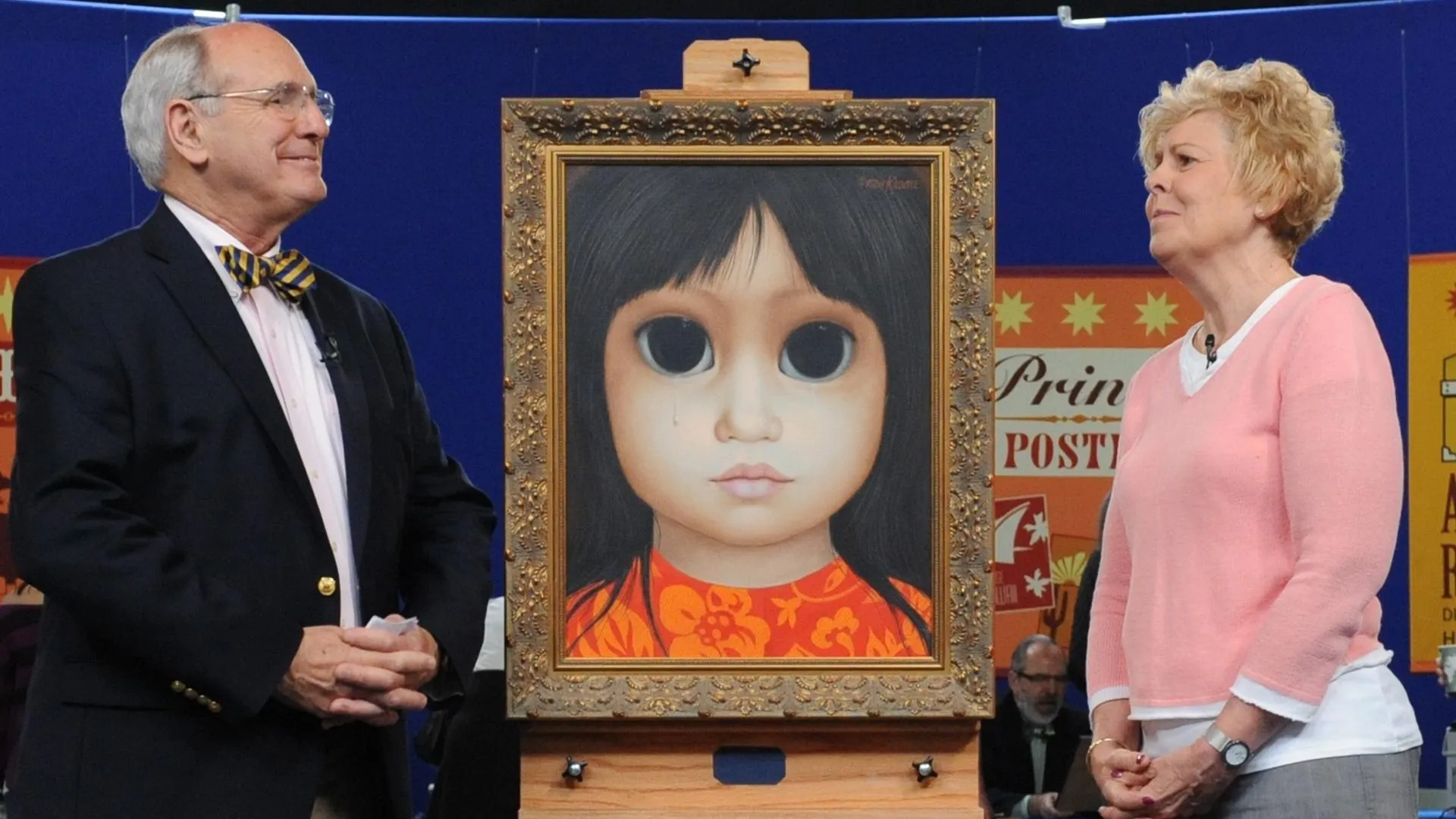GUEST: I was working in Kinshasa-- that was Zaire at the time, now Democratic Republic of the Congo-- and I was in a car stopped at a red light and a guy ran up to the window and held up this object and wanted me to buy it. It looked like it had a patina from having been handled, and that impressed me. And it looked like the carving was done well, and I could just gather that in a glance. What he asked for was about ten times what it was worth to me at the time, so I offered him what I'd be happy to get it for. He said, "Absolutely not." But the light changed, and I said, "Okay, thank you very much, we're going." And then he says, "Okay." I had probably pulled out a $100 bill to offer to him. The exchange was made, and here it is. I contacted one of the auction houses and made an appointment in New York. Well, the guy who looked at it said that the carving looked good, but there was something that didn't look right about it to him, and so he couldn't authenticate it. I frankly was disappointed, but since he didn't give me any details, I didn't place a lot of confidence, frankly, in what he said.
APPRAISER: Well, I'm now going to take you into the dark mind of an authenticator.
GUEST: Okay.
APPRAISER: Are you ready to go there?
GUEST: It sounds like bad news, but I'm ready.
APPRAISER: Well, maybe not. We look at the surface, we look at how beautiful the carving is. Those are things that are important. And I have to say the carving on this is superb. And you look at how well the face is done, how beautifully the body is, it's just beautifully modeled.
GUEST: I'm happy to hear your thoughts.
APPRAISER: I love the piece.
GUEST: Oh, wonderful.
APPRAISER: Really great. And then we go down on the handle, and then with this animal hair whisk, everything looks great. And you said Democratic Republic of the Congo. Now, that's spelled with a C. This tribe is Kongo spelled with a K.
GUEST: I see.
APPRAISER: So this is the Kongo tribe, and a whisk like this would have been used as a very important status symbol.
GUEST: That's what I thought about.
APPRAISER: Like a chief's, and this was a symbol of great power and great authority. It was royal regalia. So now we have to go to the surface. And this is where it's going to get tricky.
GUEST: I see.
APPRAISER: When we look at an object, we want the wear pattern to be appropriate for how that particular object is used.
GUEST: Yes, understood.
APPRAISER: In a way, when you look at it superficially, this makes sense. But when you look at it carefully, and you say, "Okay, if this were really handled as a fly whisk, would the surface be highly patinated over the whole piece?" That really doesn't make sense. Even into this very thin area up here, how did that get patinated the same way this is? You have to start asking questions to say, "Does that really make sense?" And the answer is that's a red flag. And it's a problem. So initially, when I looked at it, I thought, "Oh, boy." And this thing would be worth a heck of a lot of money as an authentic piece. Unfortunately, I think it's a very, very clever fake.
GUEST: Mm-hmm.
APPRAISER: I think it's a beautiful piece, I'd love to have it in the collection just because it's wonderful to look at. As a reproduction, it's still worth a heck of a lot more than you paid for it. I think it's still worth $300 to $500. The center of our world now in tribal art and African art is Paris. In today's market in Paris, this kind of piece would be worth north of $50,000.
GUEST: If it were authentic.
APPRAISER: If it were authentic.
GUEST: Next stop Paris. (both laugh)



